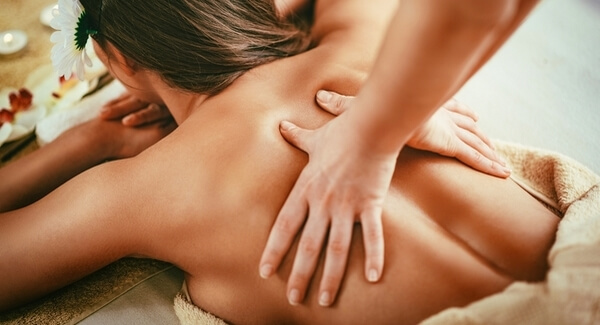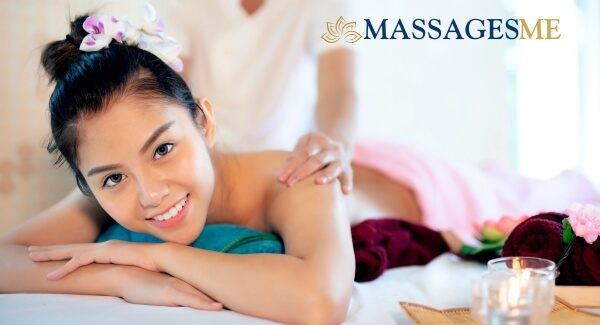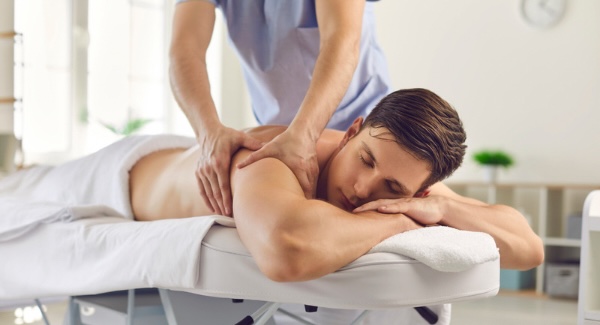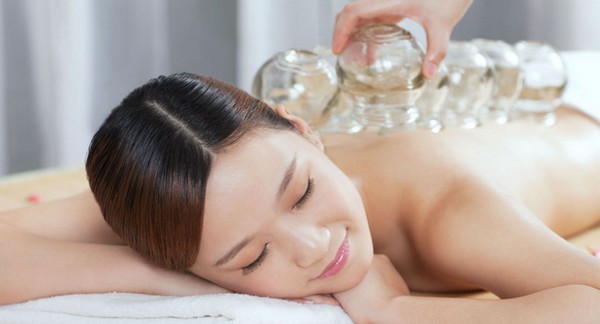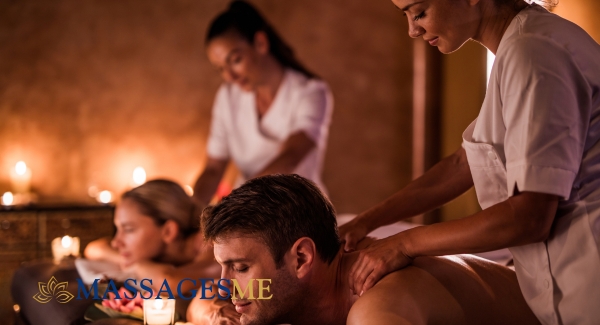Quora has become a trusted platform where UK residents seek authentic advice about massage therapy from both professionals and experienced clients. Unlike other social platforms, Quora's question-and-answer format encourages detailed, thoughtful responses that help people make informed decisions about their health and wellness investments.
1. What Types of Massage Therapy Are Commonly Practised in the UK?
Traditional Therapeutic Massage
- Swedish Massage: The foundation of Western massage therapy, focusing on relaxation and circulation
- Deep Tissue Massage: Targeting deeper muscle layers for chronic tension and injury recovery
- Sports Massage: Designed for athletes and active individuals, focusing on performance and recovery
- Remedial Massage: Clinical approach addressing specific musculoskeletal problems
Specialized UK Therapies
- Aromatherapy Massage: Combining therapeutic touch with essential oils
- Hot Stone Massage: Using heated stones to enhance muscle relaxation
- Pregnancy Massage: Specialized techniques for expectant mothers
- Indian Head Massage: Traditional technique focusing on head, neck, and shoulders
2. How Do I Choose the Right Type of Massage for My Needs?
For Relaxation and Stress Relief
- Swedish massage for gentle, full-body relaxation
- Aromatherapy massage for enhanced emotional wellbeing
- Hot stone massage for deep muscular relaxation
For Pain and Injury Management
- Deep tissue massage for chronic muscle tension
- Remedial massage for specific injury rehabilitation
- Sports massage for athletic recovery and performance
For Specific Conditions
- Pregnancy massage for expectant mothers (after first trimester)
- Lymphatic drainage for circulation and immune support
- Trigger point therapy for specific muscle knots and tension patterns
3. What Qualifications Should a Reputable Massage Therapist Have in the UK?
Minimum Required Qualifications
- Level 3 Diploma in Massage: Minimum 200 hours of training covering anatomy, physiology, and basic techniques
- Anatomy and Physiology Certification: Essential understanding of body systems and contraindications
- First Aid Certification: Current first aid and CPR training
- Professional Insurance: Public liability and professional indemnity coverage
Advanced Qualifications to Look For
- Level 4 Diploma: Advanced clinical skills including assessment and treatment planning capabilities
- Level 5 BTEC Diploma: Clinical sports and remedial massage specialization
- University Degree: Sports therapy, osteopathy, or related healthcare qualifications
- Specialized Certifications: Additional training in specific techniques or client populations
Professional Body Memberships
- GCMT Registration: General Council for Massage Therapies sets UK industry standards
- CNHC Registration: Complementary and Natural Healthcare Council approval
- FHT Membership: Federation of Holistic Therapists professional recognition
- ISRM Registration: Institute of Sport and Remedial Massage for sports specialists
4. How Much Does a Professional Massage Typically Cost in London and the UK?
London Massage Pricing (2024-2025)
| Treatment Type | Duration | Central London | Greater London |
|---|---|---|---|
| Swedish/Relaxation | 60 minutes | £70-£120 | £50-£85 |
| Deep Tissue | 60 minutes | £80-£140 | £60-£95 |
| Sports Massage | 60 minutes | £85-£150 | £65-£110 |
| Mobile Massage | 60 minutes | £95-£180 | £75-£130 |
UK Regional Pricing
- Manchester/Birmingham: £40-£80 per hour for standard treatments
- Edinburgh/Glasgow: £45-£85 per hour depending on venue type
- Regional Towns: £35-£65 per hour for qualified therapists
- Rural Areas: £30-£55 per hour with limited availability
Factors Affecting Price
- Therapist Qualifications: Higher qualified practitioners command premium rates
- Venue Type: Luxury spas cost more than clinic or home-based services
- Treatment Complexity: Specialized techniques require additional investment
- Session Length: 90-minute sessions typically offer better per-minute value
- Package Deals: Multiple session packages often include 10-20% discounts
5. What Can I Expect During My First Professional Massage Session?
Pre-Treatment Consultation (10-15 minutes)
- Health history and current condition assessment
- Discussion of treatment goals and preferences
- Explanation of chosen massage techniques
- Consent forms and privacy policies
- Opportunity to ask questions and express concerns
Treatment Room Preparation
- Private changing time with clear instructions
- Professional draping maintaining modesty throughout
- Comfortable room temperature and ambient lighting
- Relaxing music or option for silence
- Clean linens and sanitized equipment
During the Massage
- Gentle communication about pressure and comfort
- Professional boundaries maintained at all times
- Systematic approach addressing specified areas
- Option to adjust techniques based on your response
- Encouragement to relax and breathe naturally
Post-Treatment Care
- Gradual return to normal awareness
- Privacy for dressing and collecting belongings
- Aftercare advice including hydration recommendations
- Discussion of treatment response and future sessions
- Clear pricing and payment process
6. Is Massage Therapy Covered by UK Health Insurance or the NHS?
NHS Coverage
The NHS generally doesn't fund massage therapy as a standalone treatment, but it may be included within physiotherapy or pain management programs in specific circumstances:
- NHS Physiotherapy: May include massage techniques as part of broader treatment plans
- Social Prescribing: Some areas pilot complementary therapy programs including massage
- Cancer Care: Certain NHS trusts offer massage therapy as supportive care during treatment
- Mental Health Services: Limited programs may include massage for anxiety and stress management
Private Health Insurance Coverage
Many private health insurance policies now include massage therapy benefits, particularly when:
- Medical Referral: GP or specialist recommendation for specific conditions
- Qualified Practitioners: Treatment from CNHC or ISRM registered therapists
- Sports Injuries: Coverage for sports massage in athletic injury treatment
- Annual Allowances: Many policies include £200-£1000 annual complementary therapy budgets
Insurance Providers Offering Massage Coverage
- Bupa: Complementary therapy allowances with qualified practitioners
- AXA PPP: Coverage for sports massage and remedial treatments
- Vitality: Wellness benefits including massage therapy discounts
- Aviva: Complementary therapy benefits for specific conditions
7. How Often Should I Get a Massage to See Health Benefits?
For General Wellness and Stress Management
- Monthly Sessions: Ideal for maintaining muscle health and managing everyday stress
- Bi-weekly Sessions: Enhanced benefits for high-stress lifestyles or physical jobs
- Quarterly Sessions: Minimum frequency for noticeable long-term benefits
For Chronic Pain and Injury Recovery
- Weekly Sessions: Initially recommended for acute conditions and rehabilitation
- Bi-weekly Maintenance: Transition frequency as conditions improve
- Monthly Monitoring: Long-term management for chronic conditions
For Athletic Performance
- Weekly Sports Massage: Optimal for competitive athletes and intensive training
- Pre-Event Massage: 24-48 hours before competitions for performance optimization
- Post-Event Recovery: Within 2-6 hours after intense physical activity
Budget-Conscious Approaches
- Seasonal Sessions: Four annual treatments aligned with seasonal stress periods
- Package Deals: Multiple session purchases for better per-treatment value
- Self-Care Integration: Combining professional sessions with self-massage techniques
8. What Are the Benefits of Deep Tissue Massage Versus Swedish Massage?
| Aspect | Swedish Massage | Deep Tissue Massage |
|---|---|---|
| Primary Purpose | Relaxation and general wellness | Therapeutic treatment for specific issues |
| Pressure Level | Light to moderate pressure | Firm to intense pressure |
| Techniques Used | Long strokes, kneading, circular movements | Slow strokes, focused pressure, friction |
| Target Areas | Full body surface muscle relaxation | Deep muscle layers and fascial restrictions |
| Session Comfort | Gentle and immediately relaxing | Therapeutic discomfort with lasting relief |
| Recovery Time | Immediate relaxation, no recovery needed | 24-48 hours mild soreness possible |
When to Choose Swedish Massage
- First-time massage experience or sensitive to pressure
- Primary goal is stress relief and relaxation
- General muscle tension without specific problem areas
- Preference for gentle, nurturing touch therapy
- Regular wellness maintenance sessions
When to Choose Deep Tissue Massage
- Chronic muscle tension or specific problem areas
- Sports injury recovery or athletic performance enhancement
- Postural problems from desk work or repetitive activities
- Previous massage experience and comfort with firm pressure
- Therapeutic goals requiring targeted muscle work
9. Are There Any Health Conditions or Situations Where Massage Therapy Is Not Recommended?
Absolute Contraindications (No Massage)
- Fever or Acute Illness: Risk of spreading infection or worsening condition
- Blood Clots: Massage could dislodge clots causing serious complications
- Severe Heart Conditions: Uncontrolled heart disease or recent cardiac events
- Active Cancer: Without oncologist approval, particularly during active treatment
- Severe Osteoporosis: Risk of fractures from pressure
- Open Wounds or Infections: Risk of contamination or delayed healing
Relative Contraindications (Modified Treatment)
- Pregnancy: Specialized techniques and positioning required, especially first trimester
- High Blood Pressure: Gentle techniques and avoiding certain positions
- Diabetes: Careful pressure monitoring and foot care considerations
- Recent Surgery: Waiting periods and avoiding surgical sites
- Skin Conditions: Working around affected areas with appropriate precautions
- Medication Effects: Considering blood thinners, pain medications, and other drugs
Local Contraindications (Avoid Specific Areas)
- Varicose Veins: Gentle techniques only, avoiding direct pressure
- Recent Injuries: Modified approach based on healing stage
- Inflammatory Conditions: Avoiding active inflammation sites
- Suspicious Lumps: Referring to medical professionals for evaluation
10. How Do I Prepare for a Massage Session? Should I Avoid Eating, Drinking, or Exercising Before It?
Pre-Massage Preparation Guidelines
Eating and Drinking
- Avoid Heavy Meals: No large meals 2 hours before your session
- Light Snacks Acceptable: Small, light foods 30-60 minutes prior are fine
- Stay Hydrated: Drink water throughout the day, but not excessively just before
- Limit Alcohol: Avoid alcohol 24 hours before massage for safety and effectiveness
- Caffeine Considerations: Reduce caffeine to enhance relaxation response
Exercise and Physical Activity
- Avoid Intense Workouts: No strenuous exercise 3-4 hours before massage
- Light Activity Beneficial: Gentle walking or stretching can be helpful
- Post-Workout Timing: Wait at least 2 hours after moderate exercise
- Competition Recovery: Schedule massage 6-24 hours after intense events
Personal Hygiene and Comfort
- Shower Beforehand: Clean skin is appreciated by therapists and enhances comfort
- Remove Jewellery: Take off watches, rings, and necklaces that might interfere
- Comfortable Clothing: Wear loose, easy-to-remove clothing
- Communication Preparation: Think about specific areas of concern or goals
Mental Preparation
- Arrive Early: Plan to arrive 10-15 minutes before your appointment
- Relaxation Mindset: Begin mentally winding down before arrival
- Phone Silence: Turn off devices to fully disconnect during treatment
- Open Communication: Prepare to discuss health history and preferences honestly
11. What Is the Difference Between Sports Massage and Remedial Massage?
Sports Massage Characteristics
- Primary Focus: Athletic performance enhancement and injury prevention
- Target Audience: Athletes, fitness enthusiasts, and physically active individuals
- Timing Applications: Pre-event preparation, post-event recovery, maintenance sessions
- Techniques Used: Dynamic stretching, compression, friction, and percussion
- Pressure Level: Varies from light (pre-event) to deep (maintenance)
- Session Duration: Often shorter, focused sessions (30-60 minutes)
Remedial Massage Characteristics
- Primary Focus: Treating specific musculoskeletal dysfunction and injury rehabilitation
- Target Audience: Anyone with specific pain, injury, or movement problems
- Clinical Approach: Assessment-based treatment with measurable outcomes
- Techniques Used: Deep tissue work, trigger point therapy, myofascial release
- Pressure Level: Therapeutic pressure tailored to condition severity
- Session Duration: Longer sessions (60-90 minutes) for comprehensive treatment
Key Differences in Practice
| Aspect | Sports Massage | Remedial Massage |
|---|---|---|
| Assessment | Movement and performance focused | Clinical evaluation of dysfunction |
| Treatment Goals | Performance, prevention, recovery | Pain relief, rehabilitation, function restoration |
| Qualification Requirements | Sports massage certification, ISRM registration | Level 4+ clinical training, advanced anatomy knowledge |
| Session Structure | Event-specific timing and techniques | Comprehensive assessment and progressive treatment |
| Follow-up Care | Performance monitoring and maintenance | Rehabilitation exercises and lifestyle modifications |
12. Can Massage Therapy Help with Chronic Pain or Injuries?
Chronic Pain Conditions Responding Well to Massage
- Lower Back Pain: Studies show massage therapy equal to physiotherapy for many cases
- Neck and Shoulder Tension: Particularly effective for computer-related postural problems
- Arthritis: Gentle techniques reducing inflammation and improving joint mobility
- Fibromyalgia: Regular massage helping manage widespread pain and improve sleep
- Chronic Headaches: Tension-type headaches responding well to neck and scalp massage
Injury Recovery Applications
- Muscle Strains: Accelerating healing through improved circulation and tissue repair
- Ligament Injuries: Supporting rehabilitation once acute inflammation subsides
- Post-Surgical Recovery: Reducing scar tissue formation and improving mobility
- Repetitive Strain Injuries: Addressing workplace-related musculoskeletal problems
- Sports Injuries: Comprehensive treatment from acute care through return to activity
Evidence-Based Benefits
- Pain Reduction: Massage stimulates competing nerve signals, reducing pain perception
- Inflammation Management: Improved circulation helping clear inflammatory byproducts
- Muscle Relaxation: Direct mechanical effects on muscle tension and spasm
- Improved Mobility: Enhanced tissue flexibility and joint range of motion
- Stress Hormone Reduction: Lower cortisol levels supporting natural healing processes
- Enhanced Sleep Quality: Better rest promoting recovery and pain management
13. How Do UK Therapists Maintain Hygiene and Safety During Sessions?
Standard Hygiene Protocols
- Hand Hygiene: Thorough washing before and after each client contact
- Fresh Linens: Clean sheets and towels for every session, never reused
- Equipment Sanitization: Massage tables, tools, and surfaces cleaned between clients
- Personal Protective Equipment: Use of appropriate barriers when necessary
- Waste Management: Proper disposal of used materials and cleaning supplies
Enhanced Safety Measures
- Health Screening: Pre-session wellness checks for both client and therapist
- Ventilation Systems: Adequate air circulation and filtration in treatment rooms
- Spacing Protocols: Appropriate time gaps between appointments for cleaning
- Product Safety: Use of hypoallergenic, professionally tested oils and lotions
- Contact Tracing: Maintaining appointment records for health authority requirements
Professional Standards Compliance
- Insurance Requirements: Professional indemnity coverage including hygiene protocols
- Industry Guidelines: Following GCMT and professional body recommendations
- Local Authority Compliance: Meeting council licensing requirements where applicable
- Continuing Education: Regular training updates on safety and hygiene practices
14. What Should I Tell My Massage Therapist Before the Session?
Essential Health Information
- Current Medical Conditions: Any diagnosed health issues, chronic conditions, or ongoing treatments
- Medications: All prescriptions, supplements, and over-the-counter drugs you're taking
- Recent Injuries: Any trauma, surgery, or physical incidents in the past year
- Allergies and Sensitivities: Reactions to oils, lotions, or environmental factors
- Pregnancy Status: Current pregnancy or recent childbirth (within 6 months)
Treatment-Specific Details
- Areas of Concern: Specific locations of pain, tension, or discomfort
- Pain Levels: Current pain intensity and patterns (1-10 scale)
- Previous Massage Experience: What worked well or didn't in past sessions
- Pressure Preferences: Desired intensity level and any pressure restrictions
- Treatment Goals: What you hope to achieve from the session
Lifestyle and Context
- Physical Activity: Recent exercise, sports participation, or unusual physical demands
- Work Environment: Job-related physical stresses or repetitive activities
- Sleep Patterns: Current sleep quality and any related issues
- Stress Levels: General stress situation and emotional state
- Hydration and Nutrition: Recent eating, drinking, or fasting
Comfort and Boundary Preferences
- Modesty Concerns: Comfort level with undressing and draping preferences
- Communication Style: Preference for talking or silence during treatment
- Environmental Needs: Temperature, lighting, or music preferences
- Physical Boundaries: Any areas you prefer to avoid or need special attention
15. What Is the Typical Duration of a Massage Session, and What Happens If I'm Late?
Standard Session Durations
- Express Sessions: 30-45 minutes for focused work on specific areas
- Standard Sessions: 60 minutes for full-body treatment or targeted therapeutic work
- Extended Sessions: 90 minutes for comprehensive treatment and relaxation
- Intensive Sessions: 120 minutes for specialized treatments or multiple techniques
What's Included in Your Booked Time
- Consultation: 5-10 minutes initial assessment and discussion
- Preparation Time: 5 minutes for undressing and positioning
- Hands-On Treatment: 45-55 minutes actual massage for 60-minute booking
- Recovery Time: 5 minutes to dress and collect belongings
- Aftercare Discussion: 2-3 minutes for post-treatment advice
Late Arrival Policies
- 5-10 Minutes Late: Session may continue with slightly shortened treatment time
- 10-15 Minutes Late: Significant reduction in massage time to maintain schedule
- 15+ Minutes Late: May need to reschedule to avoid disrupting subsequent appointments
- Policy Variations: Different therapists and clinics have varying flexibility
Professional Scheduling Considerations
- Back-to-Back Appointments: Therapists need time between clients for room preparation
- Fair Treatment: Maintaining scheduled times respects all clients' bookings
- Quality Maintenance: Rushed sessions compromise treatment effectiveness
- Business Operations: Professional practices require consistent timing policies
16. How Important Is It to Communicate Pressure Preferences and Discomfort During the Massage?
Why Communication Matters
- Safety First: Preventing injury from excessive pressure or inappropriate techniques
- Therapeutic Effectiveness: Ensuring treatments target the right areas with optimal pressure
- Comfort Optimization: Maximizing relaxation and stress relief benefits
- Trust Building: Establishing open dialogue for better therapeutic relationships
- Treatment Customization: Allowing real-time adjustments based on your response
What to Communicate During Treatment
- Pressure Feedback: "That's perfect," "A bit lighter please," or "You can go deeper there"
- Discomfort Alerts: Immediate notification of any pain or uncomfortable sensations
- Area-Specific Needs: Requesting more or less attention to particular regions
- Environmental Adjustments: Temperature, music volume, or positioning concerns
- Technique Preferences: What feels particularly beneficial or ineffective
How Professional Therapists Facilitate Communication
- Regular Check-ins: Proactive pressure and comfort assessment throughout sessions
- Clear Instructions: Explaining what they're doing and what you should expect
- Non-Verbal Cues: Reading body tension and breathing patterns for comfort assessment
- Encouraging Environment: Creating safe spaces for honest feedback without judgment
- Adjustment Willingness: Immediate responsiveness to client preferences and needs
Overcoming Communication Barriers
- First-Time Nervousness: Remember that therapists want and need your feedback
- Relaxation Concerns: Brief communication doesn't disrupt the therapeutic benefits
- Pressure to Please: Your comfort is more important than therapist ego
- Cultural Considerations: Professional therapists respect diverse communication styles
17. What Are Common Aftercare Recommendations Following a Massage?
Immediate Post-Massage Care (First 2-4 Hours)
- Hydration Priority: Drink 500ml-1L of water to support circulation and toxin elimination
- Gentle Movement: Light walking or stretching to maintain muscle flexibility
- Rest and Relaxation: Avoid strenuous activities that could undo therapeutic benefits
- Temperature Awareness: Avoid extreme heat or cold that might stress treated tissues
- Mindful Eating: Light, healthy foods rather than heavy or processed meals
First 24 Hours Following Treatment
- Continue Hydration: Maintain increased water intake throughout the day
- Monitor Response: Notice any changes in pain, mobility, or energy levels
- Gentle Activity: Resume normal activities gradually, listening to your body
- Quality Sleep: Prioritize good rest to support healing and recovery processes
- Avoid Alcohol: Skip alcoholic beverages that can interfere with therapeutic benefits
Extended Recovery Period (2-7 Days)
- Self-Care Maintenance: Simple stretches or self-massage between professional sessions
- Activity Modification: Gradually return to full activity levels based on how you feel
- Progress Monitoring: Track improvements in the areas that were treated
- Follow-up Planning: Schedule subsequent sessions based on your response
Managing Common Post-Massage Effects
- Mild Soreness: Normal for deep tissue work, usually resolves within 24-48 hours
- Increased Urination: Natural response to improved circulation and toxin elimination
- Emotional Release: Possible mood changes or emotional sensitivity following treatment
- Fatigue or Energy: Either response is normal as your body processes the therapeutic effects
- Heightened Awareness: Increased sensitivity to areas that were treated
18. What Should I Look for in Reviews or When Choosing a Massage Clinic or Therapist in London?
Essential Qualification Checks
- Professional Registration: GCMT, CNHC, or relevant professional body membership
- Education Verification: Minimum Level 3 qualifications with specialization certificates
- Insurance Coverage: Current professional indemnity and public liability insurance
- Continuing Education: Evidence of ongoing training and skill development
- Local Authority Licensing: Proper permits where required (especially in London)
Review Analysis Guidelines
What to Look for in Positive Reviews
- Specific Benefits: Detailed descriptions of therapeutic outcomes and improvements
- Professional Conduct: Comments about therapist professionalism and appropriate boundaries
- Facility Quality: Clean, comfortable, well-maintained treatment environments
- Communication Skills: Therapist ability to explain treatments and listen to concerns
- Consistency: Regular positive feedback over extended time periods
Red Flags in Reviews
- Inappropriate Behavior: Any mentions of unprofessional conduct or boundary violations
- Hygiene Concerns: Comments about cleanliness, fresh linens, or sanitation issues
- Pressure Problems: Complaints about therapists ignoring pressure preferences or comfort
- Poor Communication: Reviews mentioning dismissive attitudes or lack of consultation
- Safety Issues: Any incidents involving injury or inadequate health screening
Questions to Ask Before Booking
- Qualification Verification: "What are your qualifications and professional registrations?"
- Experience Assessment: "How long have you been practising, and what's your speciality?"
- Treatment Approach: "How do you assess clients and customise treatments?"
- Health Screening: "What health information do you need before treatment?"
- Policy Clarification: "What are your cancellation and late arrival policies?"
London-Specific Considerations
- Location Convenience: Transport links and parking availability for regular appointments
- Pricing Transparency: Clear cost structure without hidden fees or pressure for extras
- Availability Flexibility: Accommodation for London's demanding work schedules
- Cultural Sensitivity: Understanding and respect for diverse client backgrounds
- Mobile Options: Availability of home or office visit services in London areas
Professional Standards and Regulation in UK Massage Therapy
Regulatory Framework
While massage therapy isn't regulated by law in the UK, professional standards are maintained through:
- General Council for Massage Therapies (GCMT): Sets industry standards and maintains practitioner registers
- Complementary and Natural Healthcare Council (CNHC): Government-approved voluntary regulation
- Professional Associations: FHT, ISRM, and other bodies maintaining ethical standards
- Insurance Requirements: Professional indemnity coverage ensuring practitioner accountability
- Local Authority Licensing: Some councils require permits for massage businesses
Consumer Protection Measures
- Professional Codes of Conduct: Ethical guidelines governing practitioner behavior
- Complaints Procedures: Clear processes for addressing professional misconduct
- Continuing Professional Development: Requirements for ongoing education and skill updates
- Insurance Coverage: Financial protection for clients in case of professional negligence
Conclusion: Making Informed Massage Therapy Decisions
Quora's question-and-answer format provides valuable insights into real consumer concerns about massage therapy in the UK. From qualification verification to cost considerations, the platform reveals the practical questions that matter most to people seeking professional massage services.
The investment in professional massage therapy—ranging from £40 to £150 per session, depending on location and treatment type—represents a significant commitment to your health and wellbeing. Understanding professional standards, treatment options, and what to expect ensures you receive maximum value from this investment.
Key Decision Factors
- Practitioner Qualifications: Minimum Level 3 certification with professional body registration
- Treatment Appropriateness: Matching massage type to your specific needs and goals
- Cost Considerations: Understanding pricing factors and potential insurance coverage
- Safety Protocols: Ensuring proper hygiene and health screening procedures
- Communication Standards: Working with therapists who prioritize your comfort and feedback
Whether you're seeking relaxation, pain relief, injury recovery, or general wellness maintenance, the UK's massage therapy industry offers diverse options to meet your needs. Taking time to research qualifications, read reviews, and understand treatment approaches ensures you find the right professional partnership for your health journey.
The growing integration of massage therapy with conventional healthcare, including NHS pilot programs and private insurance coverage, reflects its increasing recognition as a valuable therapeutic intervention. As this trend continues, consumers benefit from higher professional standards and greater accessibility to quality massage therapy services across the UK.
